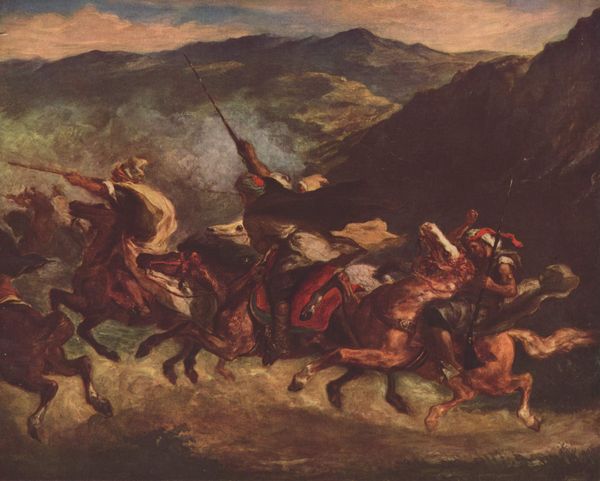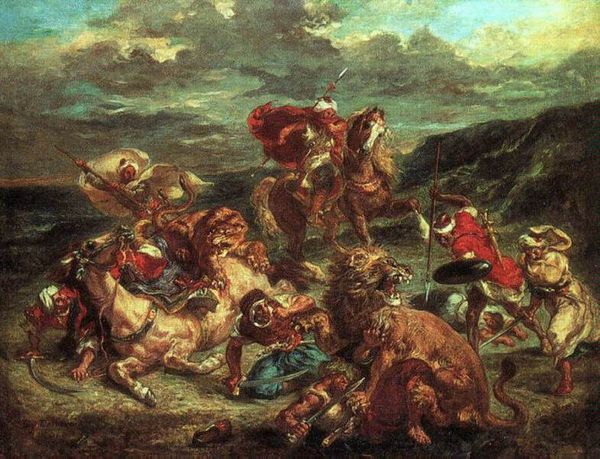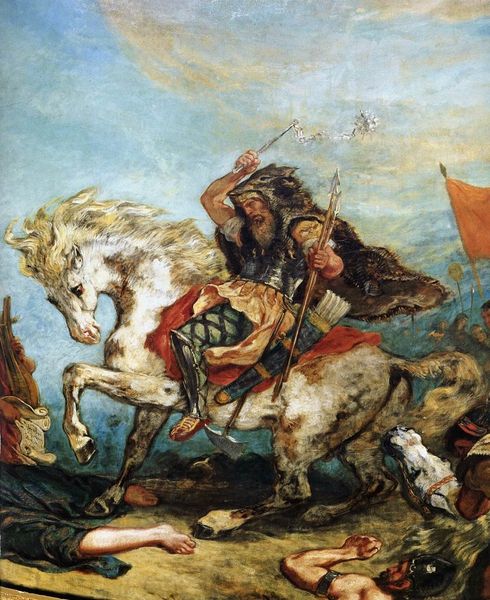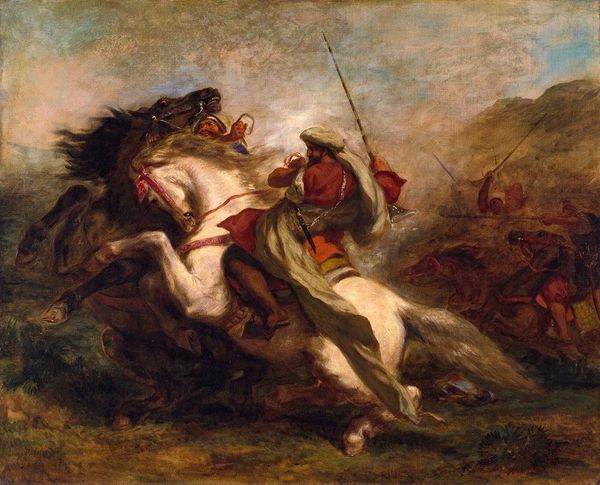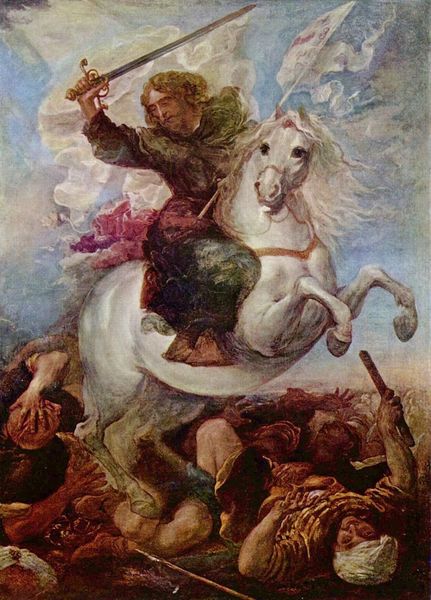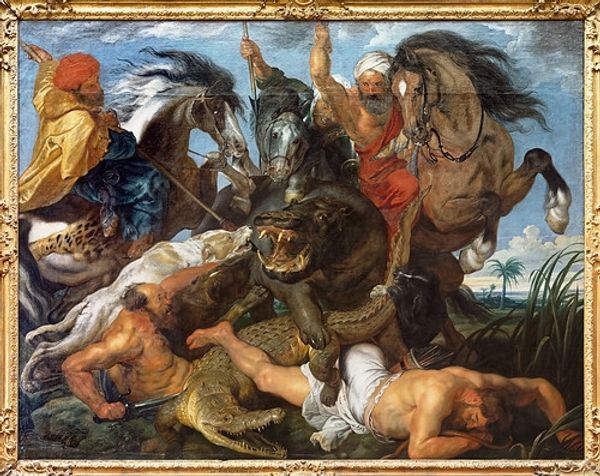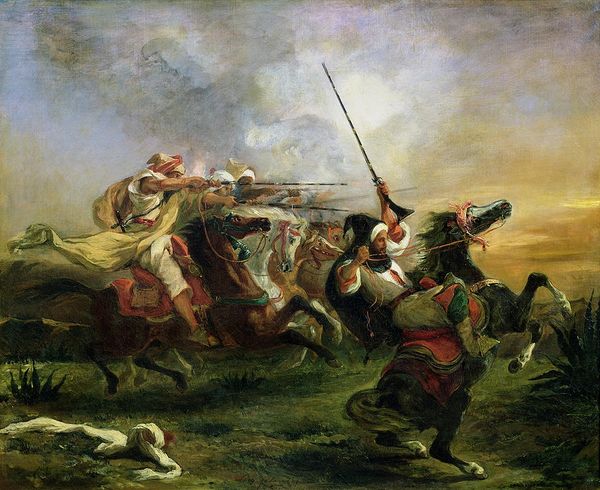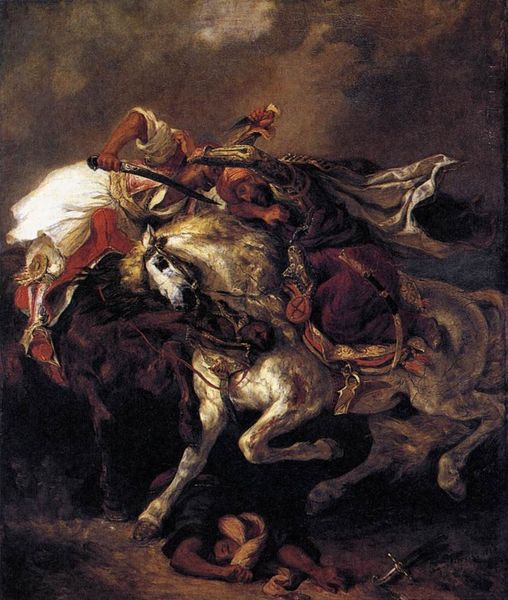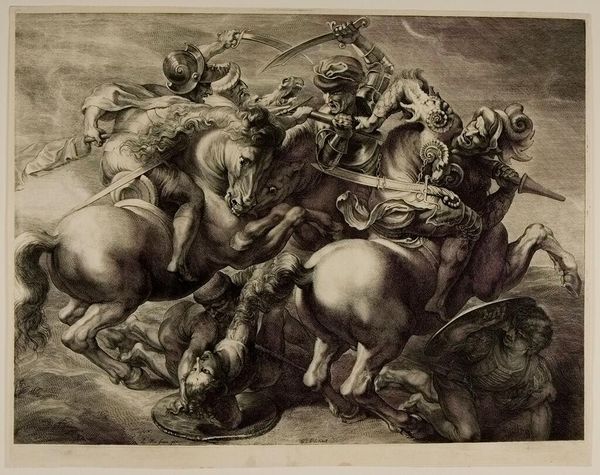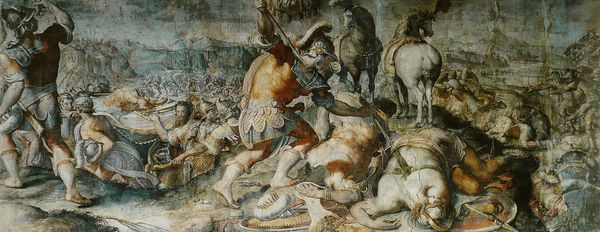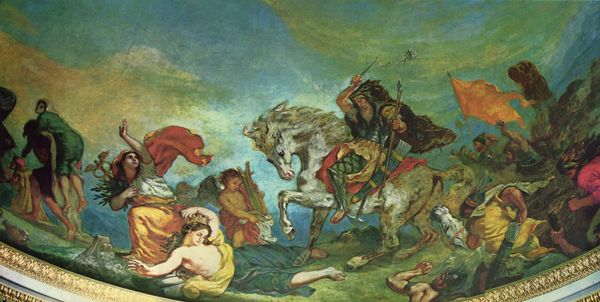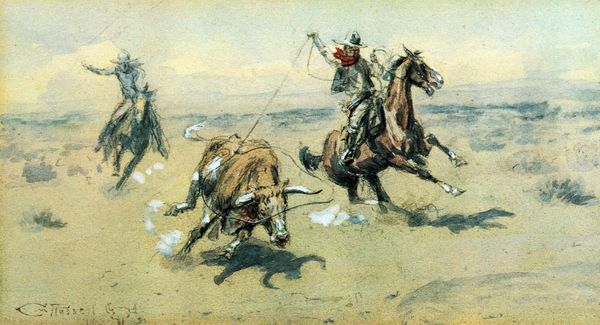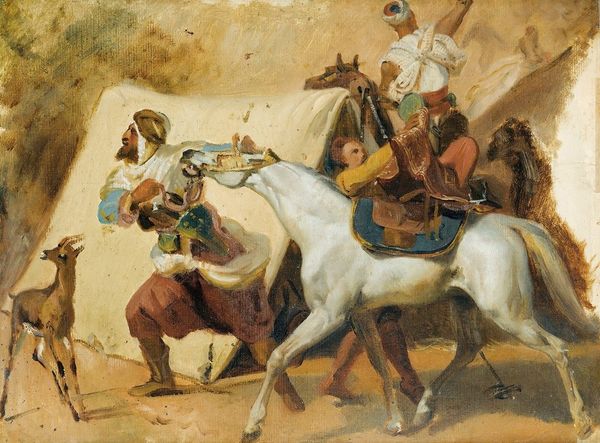
painting, oil-paint
#
high-renaissance
#
narrative-art
#
painting
#
oil-paint
#
war
#
figuration
#
oil painting
#
history-painting
Dimensions: 85 x 115 cm
Copyright: Public domain
Curator: This fragment, after Leonardo da Vinci, depicts a section of the "Battle of Anghiari," commissioned in 1505. Although the original fresco was never completed and is now lost, copies and studies like this oil painting provide insight into Leonardo's vision. What's your initial reaction to the work? Editor: What strikes me immediately is the tension achieved through the compressed composition. The interlocked bodies of men and horses create a vortex of conflict. I'm drawn to how Leonardo utilizes the diagonals to heighten the sense of drama and visual disruption. Curator: Absolutely, but let's consider the labor involved. This wasn’t merely an aesthetic exercise for Leonardo. The commission itself was steeped in Florentine political ambition, meant to glorify the city's military prowess. These copies also serve as testaments of artistry made by his contemporaries in efforts of craft to translate the high renaissance art that was emerging at the time, reflecting patronage relationships, workshop practices, and the cultural value placed on military victories. Editor: True, yet I cannot ignore the technical skill on display. The contrast in value enhances the swirling intensity of action. He's organized chaos, pushing form towards abstraction yet keeping the subject recognizable. The faces capture raw emotion, their expressions masterfully rendered through light and shadow. Curator: Yes, Leonardo’s genius lies in blending naturalism and idealization to create a tangible moment of struggle. While we can’t see the full fresco, its conception points to innovative methods to depict grand historical scenes, which in turn helped redefine warfare depiction, making it an enterprise heavily steeped in manual processes but very valuable, because it cemented the status of those involved in such scenes. Editor: Ultimately, its enduring appeal stems from the ability to elicit pure emotional responses. Through form, light, color, Leonardo elevates the mundane, the literal history, into something enduring, allowing the individual to project their own meaning onto the turmoil on display. The fragment we see presents more than just war as a political event; rather, Leonardo captured and framed it into an experience accessible in the present, which continues to capture our imaginations today. Curator: Indeed. Understanding the full scope of this artistic project requires acknowledging not just the artwork but the environment surrounding Leonardo that shaped both its creation and consumption.
Comments
No comments
Be the first to comment and join the conversation on the ultimate creative platform.
